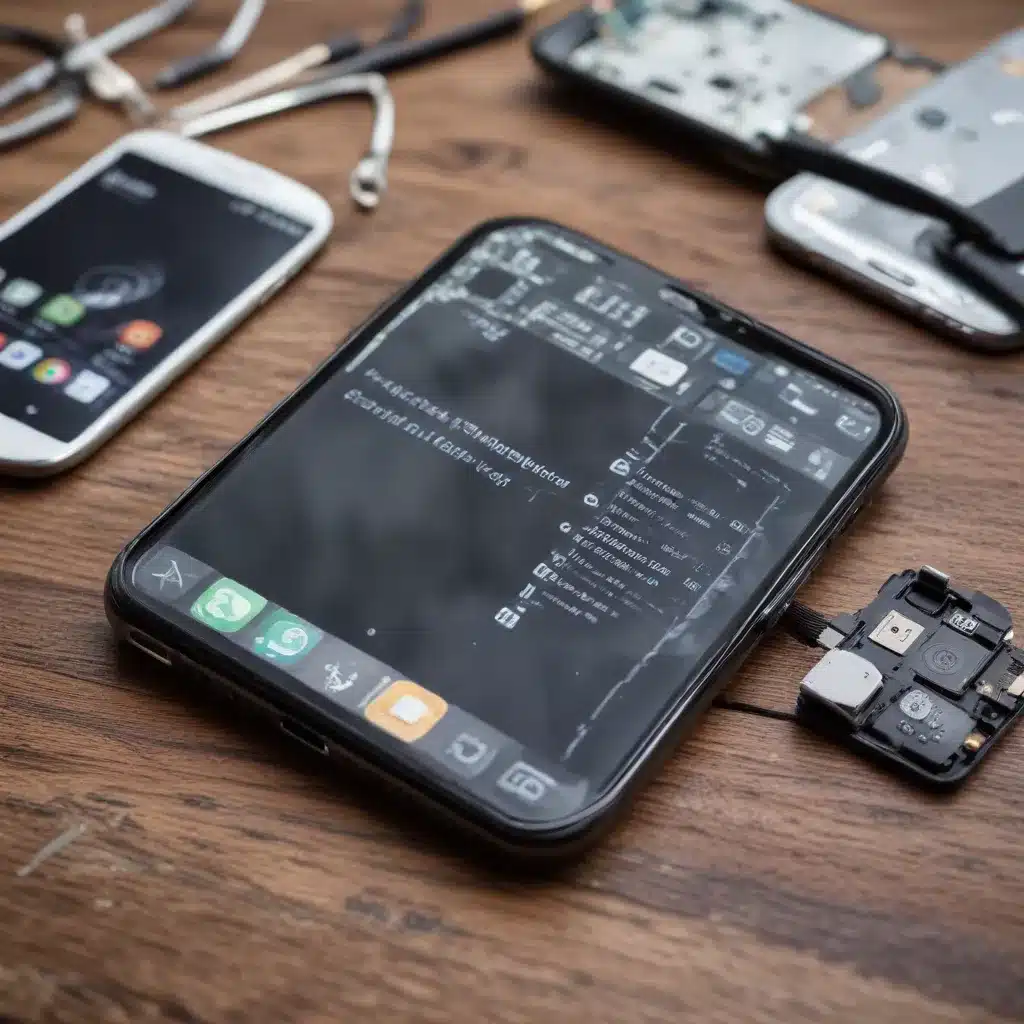
Smartphone Repair vs. Replacement: Weighing the Costs and Benefits
The Repair Conundrum: Extending the Life of Your Smartphone
As a seasoned IT professional, I’ve often found myself in the perplexing position of advising clients on whether to repair or replace their damaged smartphones. It’s a decision that requires balancing a multitude of factors, from financial considerations to the practical realities of technological progress. In this comprehensive guide, we’ll explore the intricacies of this dilemma, equipping you with the knowledge to make an informed choice that aligns with your needs and priorities.
Understanding the Repair Landscape
When it comes to smartphone repair, the first step is to accurately assess the extent of the damage. Is it a simple cracked screen, a malfunctioning battery, or a more complex internal issue? The severity of the problem will directly impact the repair costs, which can range anywhere from a few dollars for a screen replacement to hundreds for more intricate fixes.
The age of your smartphone also plays a crucial role in the repair calculus. Newer models, with their advanced components and cutting-edge features, tend to command higher repair prices. Conversely, older devices may be more cost-effective to fix, as parts and labor become less expensive over time.
Another factor to consider is the availability and quality of repair services. While authorized service centers like those operated by Apple or Samsung may offer the most robust warranties and technical expertise, their prices can be significantly higher than those of third-party repair shops. DIY fixes, though the least expensive option, come with their own set of risks and challenges that should be carefully weighed.
Evaluating the Costs of Repair
When considering a repair, it’s essential to carefully weigh the associated costs against the potential benefits. A simple rule of thumb often cited is the “50% Rule,” which suggests that if the repair cost exceeds 50% of the replacement value of the device, it may be more prudent to opt for a new smartphone.
However, as the sources consulted in this article have highlighted, the 50% Rule is a flawed and oversimplified approach. It fails to account for the nuanced factors that can influence the decision, such as the smartphone’s sentimental value, its remaining useful life, and the potential for continued functionality after the repair.
A more robust approach is to calculate the “value-added” of the repair, which involves estimating the difference in the smartphone’s market value before and after the fix. This formula, as outlined in the article, allows you to determine whether the investment in the repair will be recouped when it comes time to sell or replace the device.
Considering the Environmental Impact
In an age of growing environmental consciousness, the decision to repair or replace a smartphone also carries an ecological weight. Repairing your existing device helps to reduce electronic waste and conserve resources, making it a more sustainable choice. Conversely, opting for a new smartphone can contribute to the growing problem of e-waste, which poses significant challenges for disposal and recycling.
By exploring refurbished or certified pre-owned options, you can enjoy the benefits of a newer device while minimizing your environmental footprint. Additionally, investigating trade-in or recycling programs can help ensure that your old smartphone is responsibly disposed of, with its components potentially repurposed for future use.
Weighing the Benefits of Replacement
While repairing your smartphone can be a cost-effective solution, there are instances where replacement may be the more prudent choice. As technology rapidly evolves, older devices can quickly become outdated, struggling to keep up with the latest software updates and feature advancements.
Investing in a newer smartphone can unlock a world of improved performance, enhanced camera capabilities, and extended software support, ensuring your device remains secure and functional for years to come. Additionally, with the rise of financing options and trade-in programs, the financial barrier to upgrading may be lower than you might expect.
Ultimately, the decision to repair or replace your smartphone boils down to a careful consideration of your individual needs, budget, and priorities. By understanding the nuances of this dilemma and utilizing the analytical tools discussed in this article, you can make an informed choice that aligns with your technological, financial, and environmental objectives.
Conclusion: A Thoughtful Approach to Smartphone Longevity
In the ever-evolving world of smartphones, the repair versus replacement conundrum is one that IT professionals and consumers alike must navigate with care. By understanding the factors that influence this decision, from repair costs and market values to environmental impact and technological advancements, you can make an informed choice that maximizes the longevity and utility of your device.
Remember, there is no one-size-fits-all solution, as the optimal path forward will depend on your unique circumstances and priorities. As you weigh your options, consider not just the immediate financial implications, but also the long-term benefits and drawbacks of each approach.
Ultimately, the goal is to find the solution that best serves your needs, whether that involves a skillful repair, a timely upgrade, or a sustainable combination of both. By taking a thoughtful and comprehensive approach, you can ensure that your smartphone remains a reliable and valuable tool in your digital arsenal.
For more informative content on technology, computer repair, and IT solutions, be sure to explore the resources available on IT Fix. Our team of seasoned experts is dedicated to providing practical insights and actionable advice to help you make the most of your devices and navigate the ever-evolving digital landscape.












